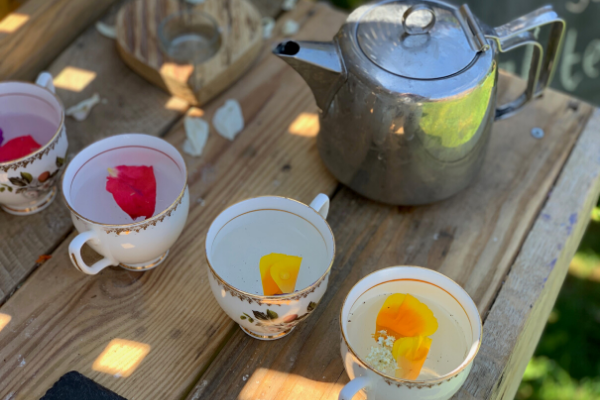The Curiosity Approach is a modern day approach to early childhood development and play. It incorporates philosophies from Reggio, Montessori, Steiner and Te Wariki to create a thoughtful approach that uses children’s innate curiosity to inspire their play and learning.
Today, I have Alexandria explaining how she incorporates the Curiosity Approach at home, and how you can easily do the same....
Using The Curiosity Approach at home...
Alexandria:
I first came across the Curiosity Approach when browsing for things to do at the weekend with my two toddlers. I came across a post from a nursery with neutral tones, wooden resources and a sandpit in an old suitcase, there were no toys in sight, and within a few moments I was inspired, and wanted to know more. As a primary school teacher, play and learning have always been a passion of mine and the curiosity approach seemed to go hand in hand with my play ethos.

I started delving a little deeper and found others that shared the same ethos, that children should be allowed to be children, they should be able to tinker and create and use their imagination. They should be given the responsibility of managing their own risks. We should support children’s curious nature and let them have the freedom to develop their own theories of the world. I wanted that, I believed in that, I just didn’t know how I could provide it.

I started delving a little deeper and found others that shared the same ethos, that children should be allowed to be children, they should be able to tinker and create and use their imagination. They should be given the responsibility of managing their own risks. We should support children’s curious nature and let them have the freedom to develop their own theories of the world. I wanted that, I believed in that, I just didn’t know how I could provide it.
What is The Curiosity Approach?
The Curiosity Approach uses natural, authentic resources. No plastic tea set in sight, instead children are taught to mange risks and handle real China tea cups with care.
The Curiosity Approach believes children deserve to explore their environment and we should provide a world of magic, wonder and a place where children can tinker and explore. Invitations to play are full of beauty and entice children to play and learn. Environments are home from home rather than watered down versions of school.
 |
| tea party role play |
The Curiosity Approach believes children deserve to explore their environment and we should provide a world of magic, wonder and a place where children can tinker and explore. Invitations to play are full of beauty and entice children to play and learn. Environments are home from home rather than watered down versions of school.
For me the Curiosity Approach helped me when I felt I should be doing more for my children, they were at that age where I couldn’t just put a few toys around them and they’d be happy, they wanted more, to explore, and they wanted to learn. I was stuck in a rut, I wanted to provide my children with the best start and felt the only way I could do this was by sending them to a childminder or nursery, but it didn’t feel right and even when I visited a few it just wasn’t what I wanted. The Curiosity Approach helped me provide learning opportunities for my children in a relaxed and cosy environment...home.
How I use The Curiosity Approach at home...
My toddlers are both under 3, therefore, we do one play set up a day and I leave it up for a few hours depending on their interest. For me, that is enough. I didn’t want to suddenly change into a childminder for my own children, I’m their mum, but I feel I’m extending their learning whilst still allowing them to be children.
 |
| Mud Kitchen play ideas |
For me, we need to adopt a more play based learning style for older children too, why do we suddenly feel children stop playing when they get to year 1 or 2? Learning environments in schools change and children become more sedentary and stationary, sat in chairs for the majority of the day. We need to create the thinkers and doers of society, and they only way to do that is to think and do!
We need to create the thinkers and doers of society, and they only way to do that is to think and do! One simple example of this could even be encouraging them to play classic card games such as Solitaire online, which enhance motor skills, emotional intelligence, problem-solving etc.
I started to share my play with others and found a community I never knew existed, within months it was a new hobby, a new passion of mine. Now I post to my Instagram almost every day and I’ve found like minded people that have now become friends.
A little bit about Alexandria:
Alexandria is a mum to two toddlers. She works as a teacher part time and has a passion for early years education in the beautiful outdoors, surrounded by nature! She loves to help share play ideas and inspire other parents and early years professionals! Alexandria creates enchanting play opportunities and environments for her children using mainly natural, authentic resources. She inspires and encourages her children to explore, sense and enjoy their play to spark their curiosity and ignite their imagination!



